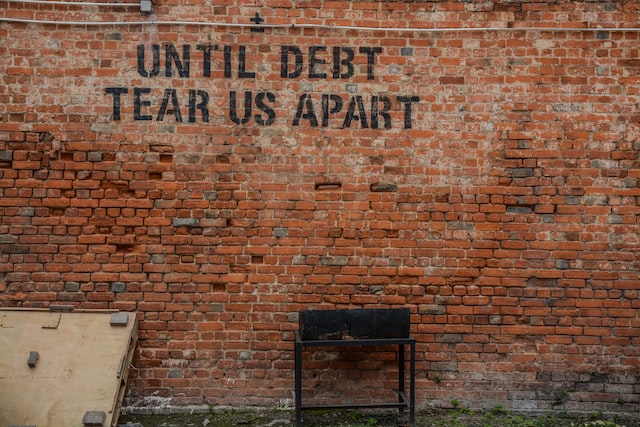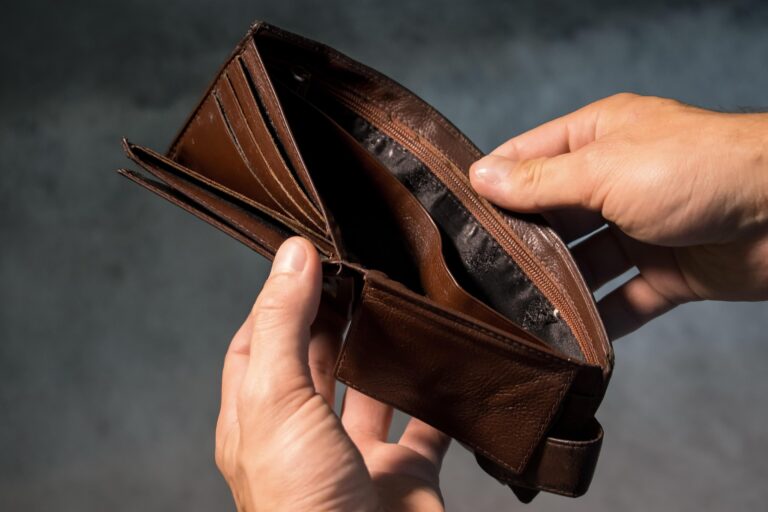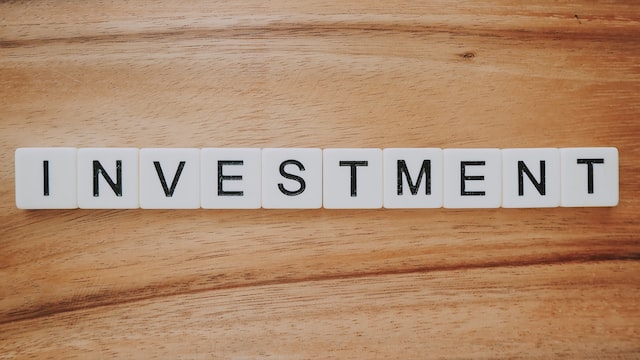Dave Ramsey Baby Steps to Build Wealth – Do They Really Work?
The Scorching Point is reader-supported. When you buy through links on our site, we may earn an affiliate commission. See more info here.

Dave Ramsey’s baby steps have been around a long time, but if you’re just getting started learning to become debt-free and build wealth, they are still as applicable as ever.
Who is Dave Ramsey?
Dave Ramsey is a famous American radio personality and author who helps people with their finances. He has written several books on the topic, including The Total Money Makeover: A Proven Plan for Financial Fitness and Financial Peace.
Ramsey is also the founder of The Dave Ramsey Show. This nationally syndicated radio program airs on over 500 radio stations across the United States.
Dave Ramsey’s 7 baby steps helped nearly 6 million people to have a total money makeover, become debt free and build wealth.
But does it still work in today’s economy? More importantly, is it right for you?
In this post, you will learn what Dave Ramsey’s Baby Steps are all about, how they work, and if they are right for you.
Step 1: Save $1000 for an Emergency Fund
The first step from Dave Ramsey’s baby steps to building wealth is saving $1,000 for an emergency fund, which may sound like a lot of money. But what happens when unexpected expenses come up? Things like medical bills, car repairs, or home improvement projects that need to be done immediately. These are all items many people struggle with when their budgets are not prepared as they should have been beforehand.
You can start the emergency savings fund by setting aside $1000 for the rainy days before any problems arise from unplanned costs so you won’t have to borrow a new loan.
A monthly budget is a great way to know how much money you can set aside each month. This simple beginner’s guide on how to budget template will walk you step by step on budgeting.
Step 2: Pay Off Debts Using The Debt Snowball
The second step in Dave Ramsey’s seven steps is to “Pay off all debts (except the house) using the debt snowball.”
His debt snowball method recommends paying off the smallest debt first, the next smallest debt, and so on until all debts are paid in full. Debt can include repaying car loans, credit card debt, or even student loans.
Dave Ramsey believes the debt snowball is the best method for two main reasons. First, you’ll see results faster which will help keep you motivated. Second, as you pay off each debt, you’ll have more money available toward the next debt, making it easier to pay off each one.
What about interest rates? While Dave Ramsey advises paying no attention to the interest rates, it’s worth paying off debt with much highest interest rate first, such as a pay-day loan.
To get started, it will be helpful to consolidate all your debts on one spreadsheet and track them along the way.
Step 3: Complete Your Emergency Fund
Now that you put aside a starter emergency fund for unexpected life events and paid off your debt. The third step of Dave Ramsey’s plan is to build a fully funded emergency fund for life’s bigger surprises by saving three to six months’ worth of bills and living expenses.
This step aims to create a cushion for times when your income may be disrupted. Many people lost their day jobs post-COVID, making this step more essential than ever. This saving amount is also handy when considering changing a career or even starting a business.
If you’re unsure how much you need to save, a good rule of thumb is to start with three months’ worth of expenses and then increase it from there.
Step 4: Save for Retirement
The ultimate goal before you retire is to have a healthy, safe cushion of money set aside for when the time comes.
The fourth step in Dave Ramsey’s seven-step plan is investing 15% of your gross income into your monthly retirement. These pretax retirement funds can be in the form of 401Ks at work or Individual Retirement Arrangements (IRA). Be sure to take advantage of the employee benefits package when the employee matches your contribution (aka a full employer match).
If you’re already maxing out your 401K contributions, you can start saving for retirement in an IRA. There are two types of IRAs: traditional and Roth. Both have their own benefits, so it’s best to speak with a financial advisor to see which one is right for you.
For most people, a combination of 401K and IRA is the best way to go.
Step 5: Save for College Funds
Once you have taken care of your debt, emergency fund, and retirement contribution, don’t skip this step if you have children.
Saving money for your children’s college fund will keep them from student loan debt, which can be one of the most significant factors in their financial stability and success.
“We recommend 529 College Savings Plan or ESAs (Education Savings Account)”, which can help you save money on taxes while saving for your children’s college expenses. Talk with your bank/credit union to get it set up.
The earlier you start saving, the more time the money has to grow. Even if you only have a few hundred dollars at the start, it’s still better than nothing.
Step 6: Pay Off Your House
Imagine never having to worry about money again. You can save, invest and spend freely without wondering if you are going over budget.
Paying off your house mortgage will be the last step to be debt free!
After you have paid everything else, consider increasing your monthly mortgage rather than making minimum payments. Adding any extra money will help you can pay it off sooner. You can save thousands of dollars in monthly interest by paying off the mortgage earlier. Also, consider refinancing your ARM, interest-only, or 30-year mortgage to a 15-year, fixed-rate mortgage.
Step 7: Build Your Wealth and Give
The final step of Dave’s baby step is to build your wealth and give.
You now have the opportunity to save and invest for your future and help others. It’s a fantastic feeling to be able to give back, whether it’s through time or money.
There are many ways to give, such as volunteering, donating money or goods, or even paying it forward. No matter how you choose to give, know that it’s a rewarding experience that will make a difference in someone’s life.
Congratulations! You have now completed Dave Ramsey’s seven baby steps and are on your way to financial freedom!
Do The Dave Ramsey Baby Steps Work?
Yes. The Dave Ramsey Baby Steps have helped millions of people get out of debt and reach financial freedom. If you are willing to commit to the steps and make some sacrifices, you can too.
How to Be Successful
Here are a few reasons why many people found success in building wealth with Dave Ramsey’s baby steps:
- It starts small – You’re not trying to do everything at once, which can be daunting and overwhelming. Instead, you focus on one task at a time, making it feel more manageable. Remember to start with the baby steps before you run a marathon.
- It builds off each other – Each step is designed to set you up for success in the next step. For example, Step 2 is to save up a $1,000 Emergency Fund, which will help you in Step 3 when you start tackling your debt. If an unexpected expense comes up, you have money to cover it without putting yourself back into debt.
- It’s flexible – The steps are meant to be a guide, not a rigid rulebook that you must follow to the letter. If one of the steps isn’t working for you, then adapt it to better suit your needs.
- It’s not a get-rich-quick scheme – There are no promises of overnight success or becoming a millionaire in a year. The goal is to help you build long-term wealth and financial stability to live a comfortable life.
Are Dave Ramsey’s Baby Steps Right for You?
The Dave Ramsey Baby Steps are an easy starting point for anyone trying to get their finances in order.
If you’re not sure if the Baby Steps are right for you, then consider these questions:
- Do you have a lot of debt? – If the answer is yes, then the Baby Steps can help you get out of debt without feeling overwhelmed.
- Are you struggling to make ends meet? – If you’re living paycheck to paycheck, then the Baby Steps can help you build up your emergency fund and start getting ahead financially.
- Are you saving for your retirement and children’s college expenses? – If you want to start saving for the future but don’t know where to begin, the Baby Steps can guide you in the right direction.
Ultimately, whether or not to follow the Dave Ramsey Baby Steps is up to you. If you need help getting your finances in order, then the Baby Steps may be a good place to start.
To learn more details on Dave Ramsey’s Baby Steps to build wealth, look at his Financial Peace University – a nine-lesson online course. This course will guide you step by step and create your money management plan.
Final Thoughts
No matter what your financial situation is, Dave Ramsey’s Baby Steps can be a helpful guide to kick-start you on the path to financial freedom.
Remember, it’s not about perfection. It’s about progress. So take your first step today to take control of your finances!
This article originally appeared on Hello Sensible.







